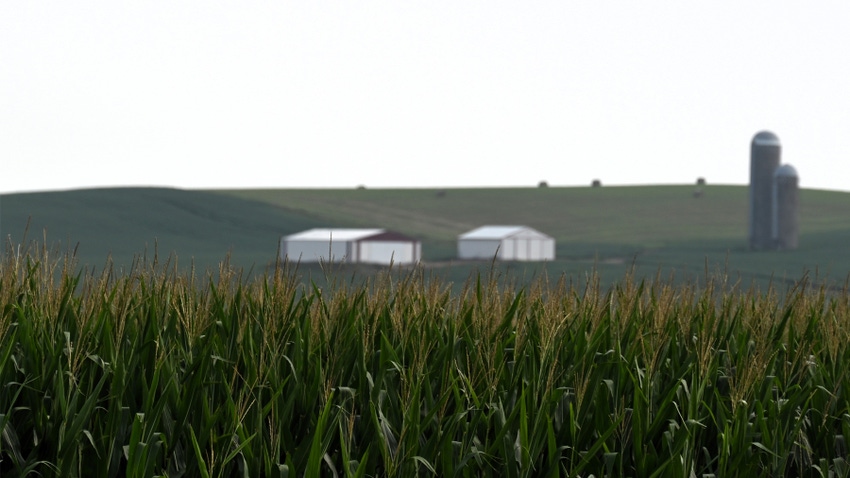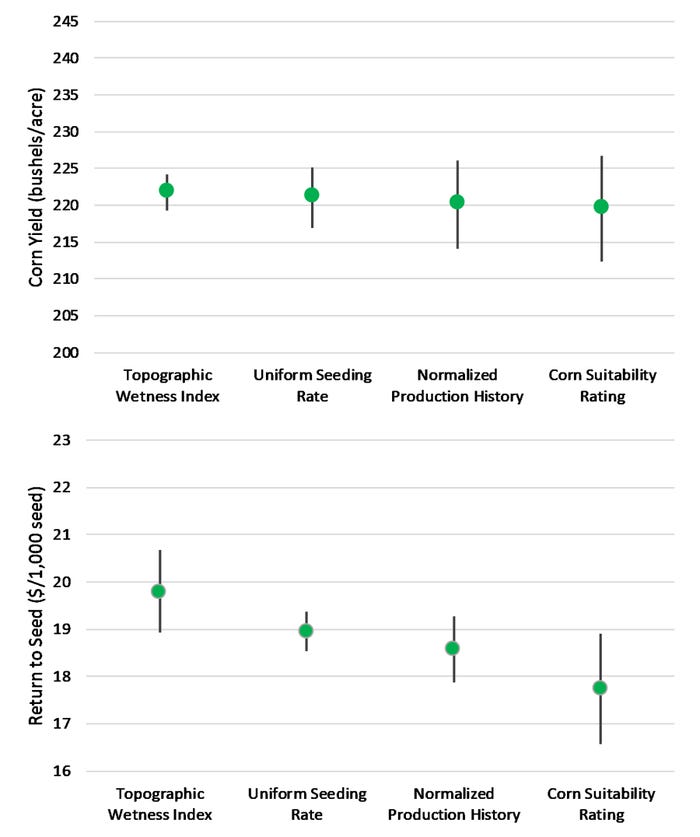November 9, 2023

Corn seed costs continue to go up, and with weaker commodity prices there is growing interest in looking at ways to cut costs or simply ensure seeding rates are economically optimized. These efforts open eyes to the possibility of using variable-rate seeding to reduce seed costs in low-productivity areas, increase yields more in high-productivity areas, or simply move away from farming on the average with uniform seeding rate.
Corn seeding rate, like many agronomic decisions, can be more of an art than a science. This is probably truer as we continue to move down a path managing a single field as several smaller fields. Hopefully understanding science can help with making artful decisions.
For variable-rate seeding to work, there must be a relationship between plant density and grain yield. And the relationship has to be influenced by some other factor. We know there is a yield response to seeding rate, and we also know this is a balancing act where more seeds per acre results in more ears per acre. As the number of ears increases, eventually the number of kernels per ear and individual kernel weight decrease. The point of maximum yield is where the number of additional ears can no longer compensate for fewer kernels per ear and lighter kernel weight.
Likewise, we know there are other factors that influence yield response to seeding rate. These “other factors” could be soil type, landscape position, soil fertility, production history, weather or a combination of many factors. It gets complicated really fast. One thing most research trials conclude is that weather may be the biggest influencer of all.
Seeding rates usually help predict yield
In most situations, corn yields will be reduced when seeding rates fall below 27,000 to 30,000 seeds per acre. An additional risk of going too low is an increase in weed pressure due to more light getting through the sparse canopy. Typically, drought-prone areas cannot support high seeding rates because water is the limiting factor.
Field areas with high available water-holding capacity can typically support high seeding rates, except for depressions that have saturated or flooded field conditions where high seeding rates are only beneficial in droughty years. Be careful of increasing seeding rates too much and compromising stalk size, resulting in poor stalk quality or creating too dense a canopy that will increase the risk for some disease pathogens.

VARIABLE METHODS: This graphic shows an example of multiple variable-seeding rate methods performance. (Iowa State University)
Expert judgement comes into play and, when talking about variable-rate seeding decisions, the farmer is the expert. Farmers know the fields better than anyone — with up to 20, 30, 40 or more years of experience farming some fields.
I continue to have optimism with variable-rate seeding, not to increase crop productivity but rather to increase whole-field profitability. I do not see variable-rate seeding saving seed costs, because ultimately there are field areas that can benefit from higher seeding rates, and other field areas where lower seeding rates are warranted. Variable-rate seeding is going to be most successful on fields with higher amounts of variability.
Here are some simple steps in developing a variable-rate seeding plan.
1. Identify field variability that can be influenced by changing seeding rates. This may be field areas where an increased seeding rate will support higher yields or where lower seeding rates result in the same yield and greater profitability.
2. Develop management zones. Management zones can use vast amounts of spatial data such as production history, soil maps or corn suitability ratings, topography maps and aerial imagery. When determining the management zone, assess the source of spatial information being used. Soil maps are likely not accurate enough, because they are digitized versions of maps drawn by experts based on landscape and surface soil features. Production history often can be influenced by extreme weather years that should be omitted.
3. Include checks in either blocks or strips across the field. The checks will help you understand whether the variable-rate seeding prescription worked or not. This helps the grower adjust from year to year to understand and realize how weather is influencing variable-rate seeding.
4. Farmers’ expert knowledge needs to critique the final variable-rate seeding plan on a field-by-field basis. Doing a critique helps ensure management zones match experience and account for all sources of yield variation.
About the Author(s)
You May Also Like






